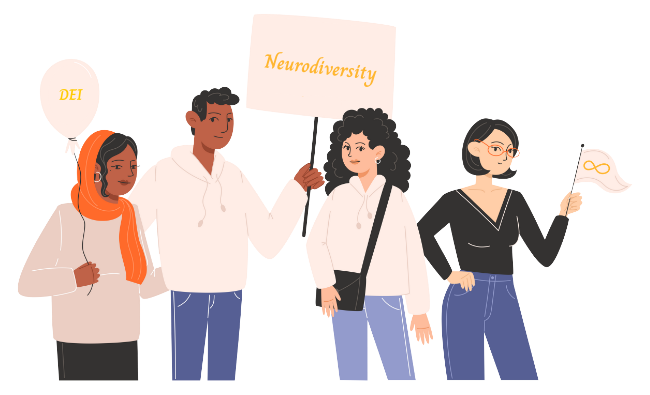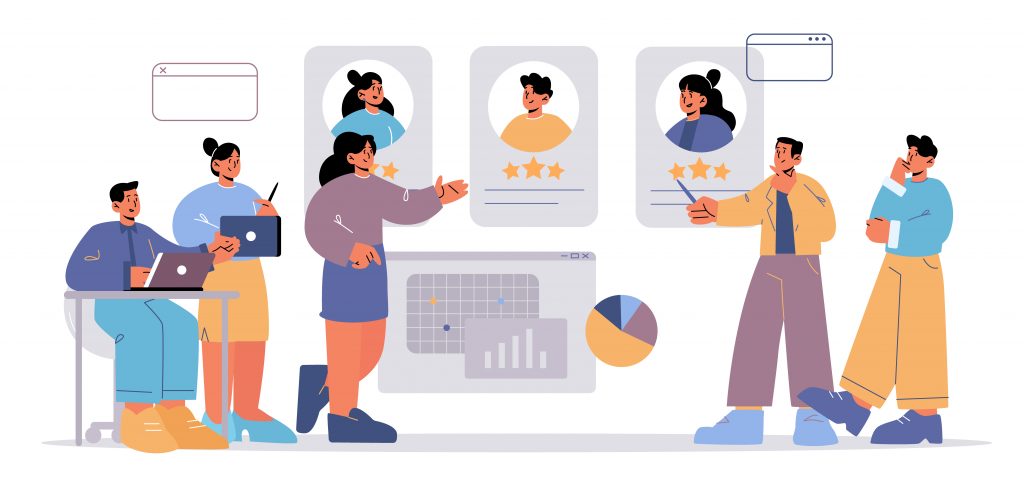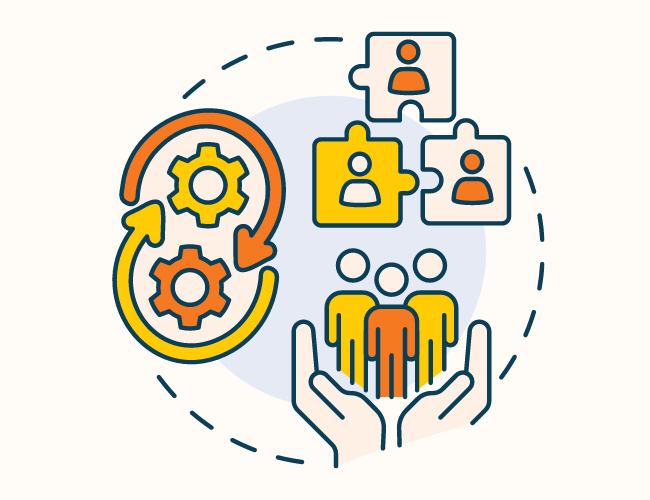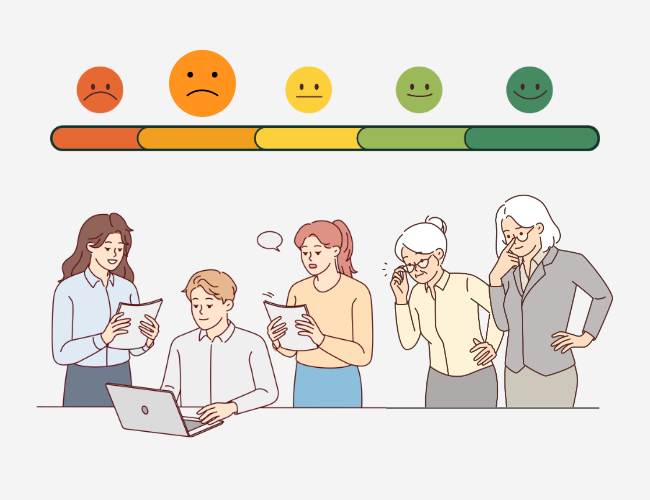The modern workforce thrives on diversity of thought and skills. An estimated 15-20% of the population is neurodivergent, including conditions like autism, ADHD, and dyslexia. This means many of these talented individuals with unique strengths in innovation, problem-solving, and focus are likely already a part of every organization. By fostering an inclusive environment that supports neurodivergent workers, organizations can empower them to contribute their best work, leading to increased engagement, innovation, and overall business success.
Pressed for time? Here’s a quick summary…
- Neurodiversity explained: Neurodiversity recognizes neurological differences, such as autism, ADHD, and dyslexia, as natural and normal variations, leading to unique ways of learning, processing information, and interacting with the world.
- Benefits of neurodiversity: Neurodivergent talents can enhance the workplace through innovation, creativity, attention to detail, and strong STEM skills.
- Underutilization: Despite their value, neurodivergent individuals often remain underutilized due to unsuitable evaluation methods and traditional hiring models that fail to recognize their unique contributions.
- Neurodiversity initiatives: Companies can support neurodivergent talent by revising recruitment to include skills-based assessments, providing solutions for sensory sensitivities, and ensuring clear, concise communication.
- Building inclusivity: Partnering with neurodiversity advocacy groups and implementing awareness training for all employees can help create a supportive and inclusive work environment.
What Is Neurodiversity?

Neurodiversity refers to the idea that brains function in a wide variety of ways. Just like fingerprints, everyone’s brain is unique. This includes variations in how people learn, process information, interact with the world, and solve problems. Variations such as autism, ADHD, and dyslexia fall under the umbrella of neurodiversity.
The concept of neurodiversity has grown into a social movement that emphasizes the strengths and value of these different ways of thinking. Instead of viewing these variations as deficiencies or disabilities, the concept reframes neurodivergent individuals as having unique abilities or being differently abled. It recognizes that neurodivergent individuals process information and interact with their environment in unique ways. When these capabilities are properly supported in the workplace, they can substantially contribute to organizational success.
Benefits Of A Neurodivergent Workforce

A neurodivergent workforce enriches the workplace with unique skills and talents:
- Detail-oriented thinking and focus: Many autistic individuals possess a remarkable ability for detail-oriented thinking and focus, contributing to high levels of accuracy and quality in their work.
- STEM proficiency: With the rise of artificial intelligence and robotics in the workplace, the demand for skills in science, technology, engineering, and math (STEM) has increased. Neurodiverse employees often excel in these areas.
- Diversification of perspectives: A neurodiverse team brings varied ways of thinking, driving creative problem-solving and collective innovation. This can improve decision-making and strategy development across the organization.
Organizations that have integrated neurodiversity programs report significant advantages, ranging from the recruitment of exceptional talent for challenging to realizing substantial cost savings. For example, one neurodivergent employee at SAP helped develop a technical solution worth an estimated $40 million in savings.
Beyond financial benefits, neurodiversity initiatives boost employee engagement and loyalty. Many neurodivergent employees express a profound sense of purpose in their work and tend to show high levels of commitment.
Organizational Shortcomings In Harnessing Neurodivergent Talent

Despite the advantages of hiring neurodivergent individuals, many organizations have yet to leverage this valuable talent pool. The obstacles largely stem from deeply rooted HR practices and societal misconceptions:
- Scalability vs. individuality: The desire for scalable HR processes often conflicts with the need to accommodate the unique needs of neurodivergent individuals. This results in a one-size-fits-all approach that overlooks the diverse profiles and potential of these candidates.
- Mismatched candidate evaluation: Standard candidate evaluation methods, especially interviews, can inadvertently disadvantage neurodiverse individuals. For example, candidates on the autism spectrum may find eye contact or conversational norms challenging, leading to misinterpretations of their abilities.
- Innovation imperative: Neurodivergent individuals’ unique problem-solving and creativity are invaluable for innovation, especially in tech-driven sectors. Yet, traditional hiring models favor candidates with conventional communication and social skills, sidelining those with analytical strengths or exceptional focus needed for breakthroughs.
Neurodiversity Initiatives: Actionable Steps For Employers
To tap into neurodivergent talent, companies must revise their recruitment and inclusion strategies, adopting more flexible and individualized approaches.
1. Review Recruitment Processes With A Focus On Inclusivity

Revamp job descriptions, application forms, and interview practices to be more inclusive. Consider skills-based assessments and work trials as alternatives to traditional interviews, which might not accurately reflect neurodivergent candidates’ abilities.
For example, EY uses a two-week hiring process that emphasizes team-based assessments and skills over traditional interviews, followed by specialized training for managers on supporting autistic employees.
2. Provide Reasonable Accommodations
Offer flexible work arrangements to accommodate different processing speeds and work styles. Additionally, provide practical solutions for sensory sensitivities, such as designated quiet spaces or noise-canceling headphones, to create a comfortable and productive work environment for everyone.
3. Implement Clear Communication Guidelines

Establish direct, unambiguous communication protocols. This includes providing written instructions and clarifications for tasks, workplace norms, and expectations, minimizing abstract or complex language.
4. Partner With Neurodiversity Advocacy Groups
Collaborate with neurodiversity advocacy groups for insights into best practices, help in sourcing talent, and ongoing support for neurodivergent workers.
5. Create A Safe & Supportive Environment
Invest in neurodiversity awareness training for all employees to foster empathy and celebrate differences. This includes educating staff on respectful language, avoiding wrongly framing neurodivergence as a disorder or sickness. A well-informed workforce is more likely to support their neurodivergent colleagues effectively, contributing to a culture of inclusivity.
6. Respect Privacy & Autonomy

Not all employees may feel comfortable sharing their neurodivergent status. To foster an inclusive environment, organizations should ensure support and accommodations are available to all without the need for disclosure. This allows employees to seek assistance without compromising their privacy.
7. Continuously Review & Improve Processes
Regularly request feedback from neurodivergent employees, reviewing and refining practices accordingly. This commitment to continuous improvement ensures the workplace remains inclusive and supportive of all forms of diversity.












